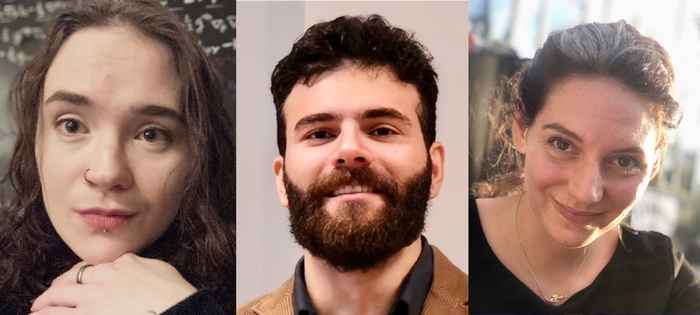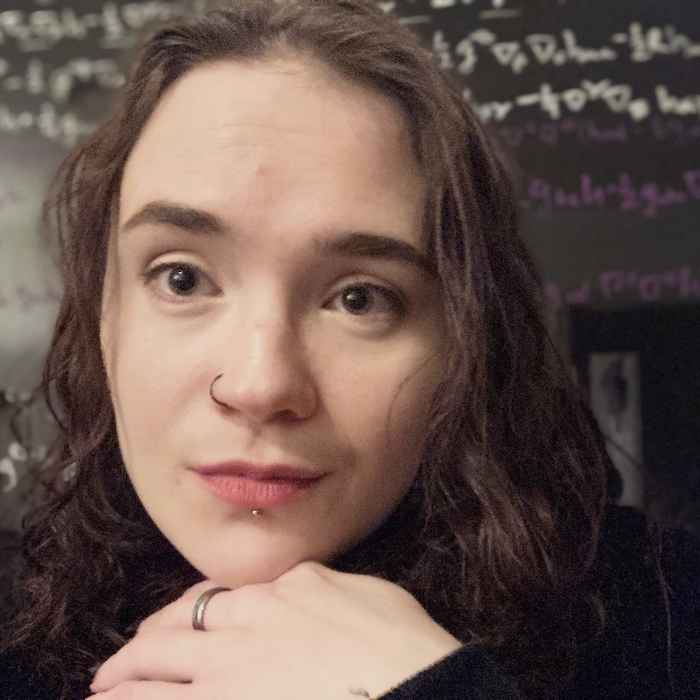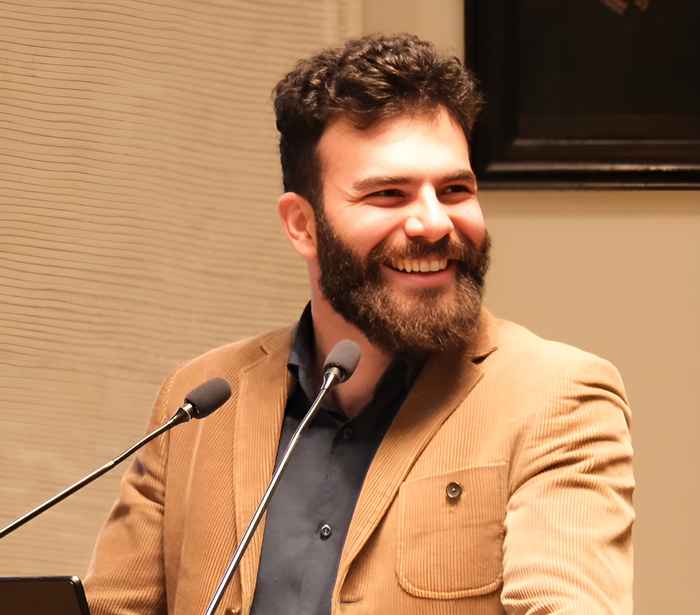IoP welcomes three NWO Veni laureates
25 July 2025

The Veni grant, part of the NWO Talent Programme, is a personal scientific grant aimed at researchers who have recently obtained their PhD. The aim of the grant is to create creative space for adventurous, talented, pioneering researchers, in which they can conduct research of their own choosing, develop a line of research and further develop their talent. In the present round, 200 researchers across all disciplines were awarded the grant. With their Veni grants, physicists Stephanie (Alex) Brown, Kamran Salehi Vaziri and Olfa D’Angelo will fund their postdoctoral research at the UvA-Institute of Physics.
Stephanie (Alex) Brown

Stephanie (Alex) Brown is an astrophysicist who is currently working as a postdoctoral fellow at the Oskar Klein Centre in Stockholm. She works on topics related to gravitational waves, neutron stars and alternative theories of gravity. She will carry out her research project in the group of Samaya Nissanke, as part of the GRAPPA initiative.
The hunt for new physics: using the power of neutron stars to test Einstein's theory of gravity
Brown’s project investigates binary neutron star mergers, exploring the intersection of gravitational and nuclear physics. These extreme events, with strong gravitational fields and near-light-speed dynamics, provide a unique opportunity to study fundamental physics and the nature of ultra-dense matter. By developing a framework to test general relativity that accounts for neutron star properties, the work will enable the first theory-agnostic analysis of such systems. Additionally, it advances data analysis and machine learning techniques, maximizing the scientific potential of current and future gravitational wave detectors and opening new pathways to understand gravity and the universe.
Kamran Salehi Vaziri

Kamran Salehi Vaziri is currently already at IoP, as a postdoctoral fellow in the String Theory Group. He works on quantum field theory in curved spacetimes and quantum gravity. His project will be carried out in the String Theory Group in collaboration with in particular Daniel Baumann and Jan de Boer.
From Quantum Mechanics to Cosmology: Mapping the Possible Universes
One of the main goals of modern physics is to describe the exponential expansion of our universe, both in the past and in the future. The correct theory to model our universe must be consistent with fundamental physical principles. In Salehi Vaziri’s work, by applying the rules of quantum mechanics and the symmetries of spacetime, he will propose a framework to identify the criteria that our expanding universe must satisfy. This approach can provide key insights into the physics of the early universe and its ultimate fate.
Olfa D’Angelo

Olfa D’Angelo is currently a CNES Fellow at the Institut Supérieur de l'Aéronautique et de l'Espace (ISAE-SUPAERO) in Toulouse. Her work is aimed at understanding the behaviour of soft matter, in particular granular materials, in low gravity. At IoP, she will join the FluidLab of Mazi Jalaal.
Influence of gravity on granular flows, from Earth to space – and back
How would everyday objects behave without gravity? This is a difficult question, as gravity is always around. For soft, flowing matter, gravity often dominates over the properties of materials. This explains why granular materials, from powdered sugar to landslides and asteroids, are not fully understood: we lack access to their intrinsic qualities, obscured by gravity. In her project, D’Angelo will measure gravity’s effect on granular flows, on Earth and in low gravity. Based on the outcomes, she will develop a model valid in both situations, and an experimental sand that mimics how Moon-soil flows, allowing to test space technologies safely on Earth before space missions.